The right shell for the right goal.
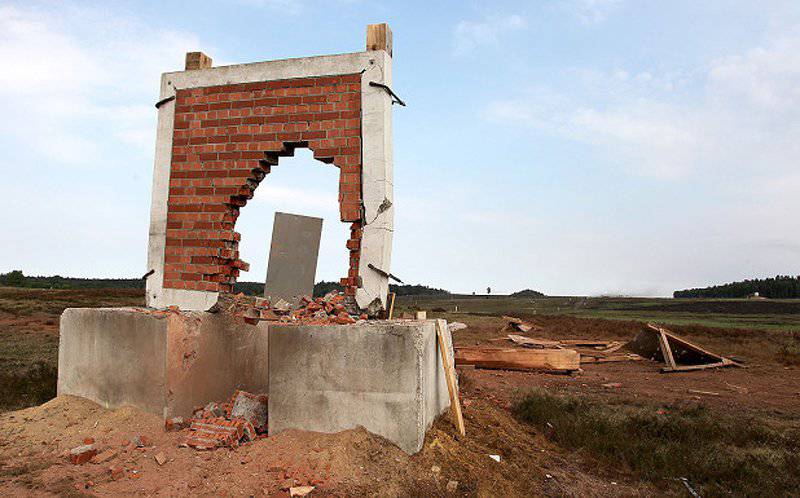
The consequences of shelling a brick wall with a DM11 shell. 120mm smoothbore gun designed to combat tanks, for different purposes, new types of shells are needed
The appearance of the 125-mm smooth-bore cannon on Soviet tanks triggered the development of the 120-mm smooth-bore cannon on Western tanks. At that time, the main battle tanks (MBT) of western countries were armed mostly with 105 rifled guns. The German Leopard 2 was the first tank to come into service with a cannon, and soon followed by the American tank M1 Abrams. However, the tanks deployed in the Balkans after the fall of the Iron Curtain lacked suitable ammunition, and therefore the chances of confronting the tank against the tank were actually very low. Armor piercing projectiles were no longer the preferred type of ammunition.
Thus, there is an urgent need for universal caliber ammunition. But twenty years later, new types of ammunition are being developed and improved to fully meet the needs of tank crews.
A good example of a versatile ammunition developed for current scenarios is the Rheinmetall DM11 / Rh31. It was designed and manufactured by a German company, or rather, by its joint venture Defense Munitions International, created jointly with the US General Dynamics Ordnance and Tactical Systems from Pennsylvania. The new projectile is based on the requirements of the German Bundeswehr and the American Marine Corps. The German army needed a universal projectile capable of hitting various types of targets.
The first requirement consists of three subtasks. First, the destruction of the anti-tank missile system in the shelter and outside it at a distance of 5000 meters. To do this, an air blast (and therefore a time-delay fuse) and a cloud of tungsten-shaped splinters are produced along the axis of the projectile. Secondly, a projectile is needed to destroy dismounted mechanized infantry, which again requires a remote fuse, as well as axial debris, to which radial debris created by heavy projectile body fragments must be added. Thirdly, the defeat of the targets hiding in the buildings, and this requires a thick-walled projectile with a time delay fuse. And finally, point detonation is needed to destroy light armored targets and unarmored targets at long ranges.
Flexibility was put at the forefront - even when already in the chamber, the projectile should allow for correcting the combat mission and changing the mode of the fuse. The requirements of the marines were similar, since it intended to use a new projectile to combat the dismounted infantry and separation in the "wedge" order, therefore, an air detonation with a decelerating fuse and the formation of axial and radial debris are necessary. The simulation showed that 27 of 30 soldiers in such a battle formation will be hit by shrapnel when shooting only two shells.
The DM11 projectile with a three-mode fuse developed by the German company Rheinmetall is also produced in the United States by Defense Munitions International (a joint venture between Rheinmetall and GD-OTS)
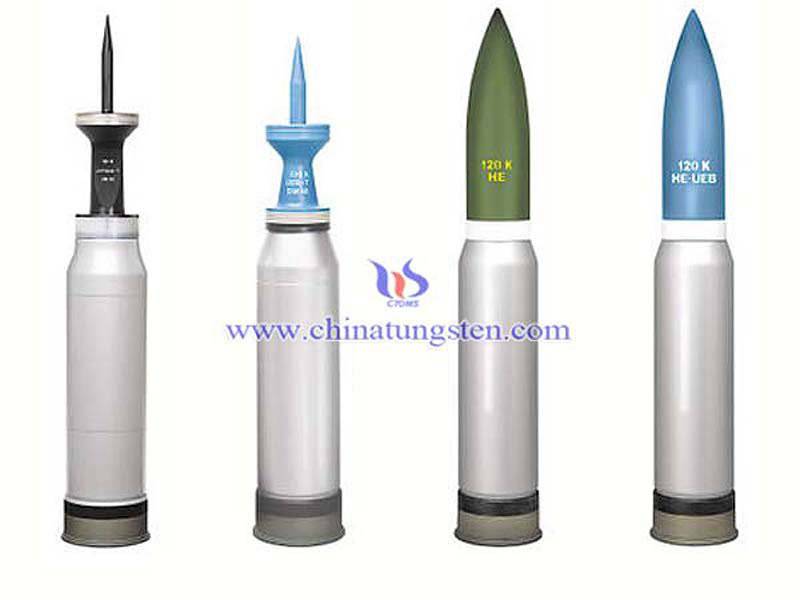
Sub-caliber and high-explosive fragmentation projectiles from Rheinmetall. By adopting DM11, the German army provided tank crews with truly multitasking tools.
The second requirement was for the walls. A projectile was needed that could pierce a reinforced concrete wall with double reinforcement 20 cm thick due to detonation in it due to the thick-walled case and the head fuze with a delay.
The third requirement concerned the destruction of earthen and wooden dugouts, it required a shock fuse, as well as high firing accuracy, a projectile that would detonate inside sandbags. Thus, the new high-explosive fragmentation ammunition 120x570 mm for the Leopard 2 tank was equipped with a programmable fuse installed in the rear part of the warhead with a front ballistic tip containing more than 6000 tungsten balls and a non-sensitive explosive in the middle part of the body weight of the target body, the target body weight of the target body weight, the target body weight, the target body weight, the target body weight, the target body size, the target body size, the target body weight, the target body size, the target body size, the target body size, the target body size, the target body size, the target body size, the target body size, the target body size, and the target body weight of the target body, the heart rate, as well as the target body weight, the target body weight, and the target body weight of the target body weight, as well as the target body weight, the heart rate, the heart rate, and the heart height of the target body size, as well as the target body weight, the heart rate, and the body height of the target body weight, as well as the target body weight, the heart rate, the heart rate, and the heart rate, the heart rate and the body weight of the target body weight, which is at the center can create 2,17 kg of steel splinters. The signal cable goes from the fuse to the back of the projectile to the igniter with a data transmission channel. Program data is provided by the fire control computer. In order to provide additional status information, another control block was added to the loader control unit, which has a button for selecting a point detonation with or without delay. The fuse is programmed by means of a cable and a contact pin that transmits data to the data channel of the igniter. Compared to systems using an external solenoid, this solution allows changing program data even when the projectile is in a chamber (this is one of the requirements of the German army).
The DM11 modular projectile gets the Rh31 designation when installing a simple point detonation fuse and a less powerful propulsion module, which allows you to get the maximum range of the entire 3,5 km and a much lower cost per shot. This decision, which does not require a system of wires and the aforementioned programming electronic devices and a universal fuse, was made by Denmark, which received 2013 of such projectiles in the 2500 year.
Among the new opportunities requested by the American army are the neutralization of anti-tank calculations at long distances and the making of passages within the walls.
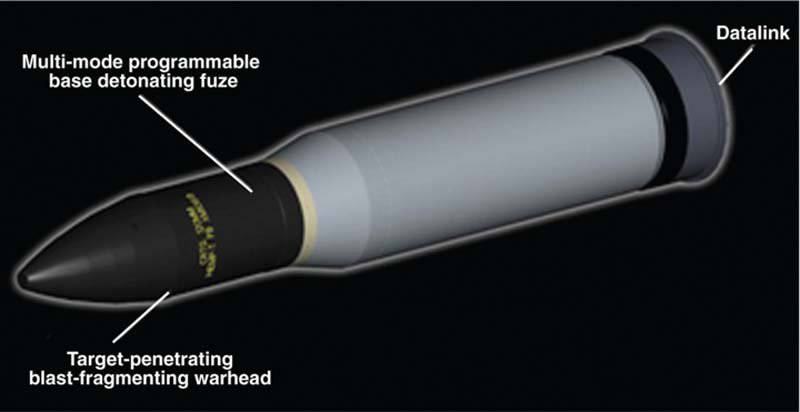
The concept of a promising advanced universal ammunition XM1069, which should soon enter service with the US Army
Let's go back to DM11. In addition to the US Marine Corps, which became the first branch of the military to receive 450 shells as an urgent operational requirement for its M1A1 tanks in Afghanistan and the German army, the shell was also ordered by Greece and Norway (6500 shots total). With a caliber length 44, the initial speed of the DM11 is about 970 m / s, whereas in the latest version of the Leopard 2, armed with an L55 gun, it increases to 1000 m / s. With the DM 11, you can shoot in any climate, it is qualified for the A1, B3 and C2 zones and can thus be shot at ambient temperatures from -46 ° C to + 71 ° C.
Immediately after the delivery of its first DM11 serial projectiles, Rheinmetall began developing a training projectile with the RH88 TP-T tracer, which is currently qualified and will be available by the end of 2015. RH88 meets all current requirements for shooting at ranges, for example, low cost, safe handling and temperature shooting conditions. The tracers are visible, at least from 2000 meters, the throwing substance is non-polluting (eco-friendly) and ballistics, of course, corresponds to the original ballistic tables and requirements for safe zones. Interestingly, this projectile was created with another goal. The real goal does not always require the impact of a military projectile on the final part of the trajectory; sometimes (including when it is necessary to reduce indirect losses), the training projectile can offer the optimal solution even in a real combat collision.
Rheinmetall engineers are very active in the field of ammunition. The company is seriously considering the development of additional projectiles for its 120-mm smoothbore gun. The main battle tank is the most protected machine in the military registry (although not always with good mobility in a confined space), its use in urban scenarios is no longer prohibited, therefore such scenarios require the development of new, more suitable projectiles. Punching walls, an incendiary effect, a reduced muzzle wave (excluding a dusty cloud of a blinding arrow for a long time), shorter distances, scalable and programmable effects — the German company wants to “invest” these opportunities in its promising shells for urban combat.
The US Army needs impact on four types of targets: bunkers, light armor, concrete walls and infantry in open areas.
Advanced Universal
The US Army intends to replace the four types of shells with one, known as AMP (Advanced Multi-Purpose - advanced universal). This will not only significantly simplify logistics, but will also give the Abrams tank new opportunities. Currently, the US Army and Marine Corps use armor-piercing projectiles M829A1 and M829A3 plus ammunition to fight with a lot of different purposes, including M830 HEAT-MP-T (cumulative caliber), M830A1 HEAT-MP-T (cumulative Subcaliber), M908 HE -OR-T (high-explosive fragmentation, to destroy obstacles) and M1028 Canister (cassette).
According to some reports, AMP will have three modes of operation: point detonation, delayed and air detonation. This will allow the operator to neutralize the groups with the ATGM complexes at a distance above 500 meters and punch reinforced concrete walls. Judging by the illustrative material provided by the Ardec Armaments Research and Development Directorate, the projectile will have a communication channel at the base of the cartridge case, a multi-program bottom fuse installed at the base of the projectile and a high-explosive fragmentation warhead.
A projectile, which has the designation XM1069 so far, will reduce the number of ammunition types to two, that is, the AMP itself plus the M829E4 advanced kinetic projectile. In addition to reducing the volume of logistics, this resolves the “crew dilemma of what to take to the battle.”
The previously mentioned joint venture Defense Munitions International offers its own version of DM11. Currently, this universal high-explosive fragmentation projectile is in service with the Marine Corps under the designation M242. In order to better meet the requirements of the army, this ammunition is being finalized. Another main competitor, ATK, conducts research and development with its own funds before the Congress allocates money for the development and production phase.
Together with Nammo, GD-OTS offers 120-mm insensitive high-explosive high-explosive fragmentation projectile with IM HE-T tracer (Insensitive Munition High Explosive), designed to hit most targets with the exception of heavy and medium-armored. Throwing matter and warhead are insensitive (inert), and this, of course, increases the safety of the crew. The warhead contains 3,2 kg of inert explosives, which, according to the company GD-OTS, is more than two times higher than the HEAT cumulative anti-tank shells in service. The manual-mounted nasal dual-mode fuse allows the tank commander to choose either a point detonation function to maximize the formation of fragments / explosive impact, or a function with a delay for detonation after a target is punched. Training options are also available in the form of inert shells with a tracer and sighting shells with a tracer.
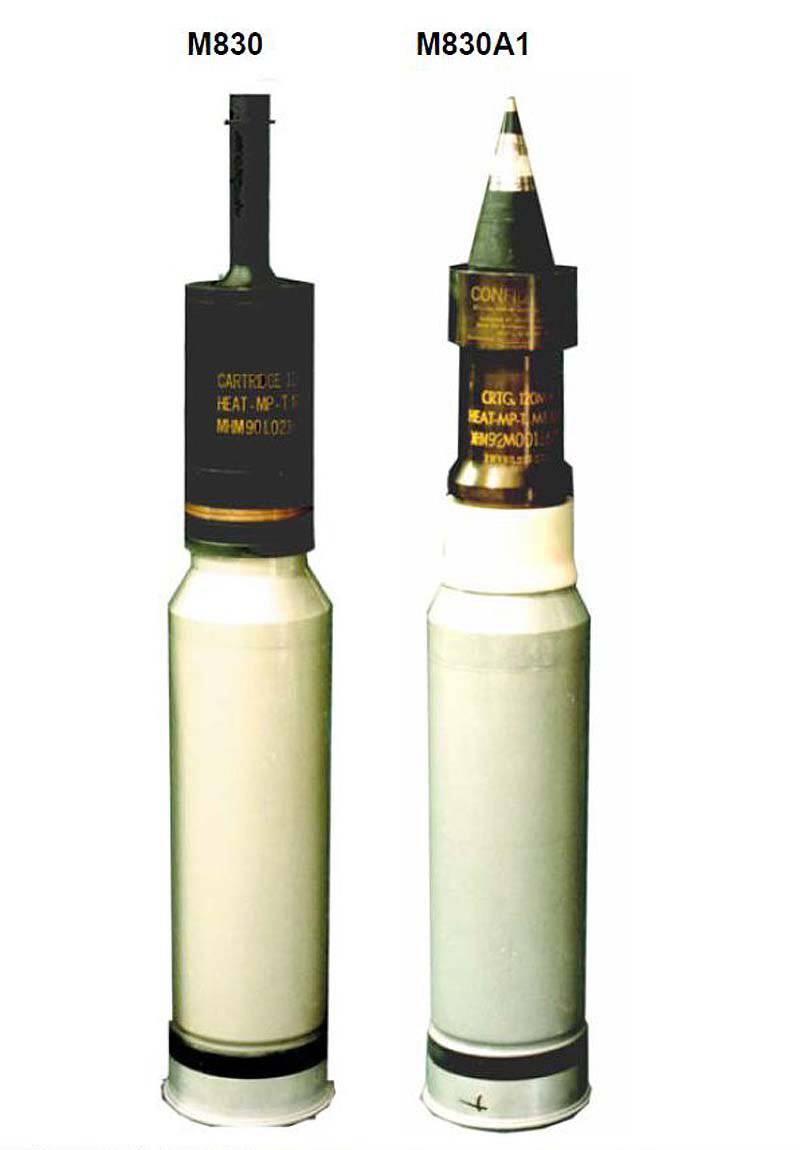
If M830 is a true caliber cumulative projectile, then the M830A1 model (top of the photo) is a sabot projectile with a separating tray that retains a cumulative warhead, but has a higher initial velocity (1400 m / s against 1140 m / s). This increases its armor penetration at all distances, even when firing at ... helicopters.
For its part, the M908 OR (Obstacle Reduction) projectile serves to destroy obstacles. It is a modification of the previous type, in which the front fuse is replaced with a steel nose for breaking an obstacle until the moment of detonation. Thus, this ammunition can destroy various obstacles and barriers, such as concrete, stones, anti-tank battles, etc. According to ATK, the new projectile showed better performance compared to the ubiquitous 165-mm projectile M123A1 HE, which is included in the Centurion AVRE engineering vehicles of the British Army and the M728 engineering tanks of the US Army. For the destruction of a dismounted enemy at distances up to 500 meters, Abrams tanks have an M1028 Canister cluster projectile in ammunition, in which tungsten balls with a diameter of 9,5 mm are laid. This projectile is revealed immediately after leaving the muzzle and throws balls in front of the tank over 1100 - the principle of operation is the same as that of a shotgun. Of course, here a strong limiting factor is the range.
The M1028 cassette can receive several improvements in the future. As a consequence of the Afghan experience, GD-OTS received a request to improve the performance of the ammunition at high temperatures. The company has worked on a hybrid propellant and the projectile can now be used at temperatures up to 71 ° C. Now GD-OTS hopes to get a contract in 2014, both for new projectiles and for upgrading the existing M1028 to the new standard.
The IM HE-T 120-mm projectile developed by GD-OTS and Nammo differs in a manual dual-mode fuse that provides good flexibility at a relatively low cost.
The M1028 cassette version contains over 1100 tungsten balls
Multi Purpose Munition, in the American marines, it is known as the high-explosive fragmentation munitions M242. This projectile is an American version of the German DM11 projectile. Production company GD-OTS
Israel
Israel has always been forced to arm its tanks with not only anti-tank, but also universal projectiles in order to provide infantry with adequate support during operations in urban areas (by the way, in the past decade, cities have been the standard location for military operations of the Israeli army). Therefore, in addition to armor-piercing sub-caliber ammunition (many will recall a photo of the hole made by such a projectile in the barrel of a T-72 tank gun), Israeli requirements stipulate the presence of universal projectiles in the ammunition.
In connection with the transition from 105-mm rifled guns to 120-mm smooth-bore guns, Merkava III and IV tanks needed new projectiles. Israel Military Industries manufactures tank guns and ammunition for them. Currently, she has in her portfolio one kinetic projectile (M322 APFSDS-T) plus three universal projectiles that allow the crew of a Merkava tank to shoot at unarmored targets: the M325 HEAT-MP-T universal anti-tank cumulative projectile -Purpose), the M339 HE-MP-T Universal High-Explosive Multipurpose (High Explosive Multipurpose) and the M329 projectile for hitting manpower and material objects (Anti-Personnel / Anti-Material) better known as Apam.
The M339 universal projectile from Israel Military Industries, like other similar projectiles, has a three-mode detonator to maximize operational flexibility.
While the main task of the M325 HEAT-MP-T is to destroy medium and light armored vehicles, its explosive and fragmentation impact also makes it possible to disable infantry. M339 HE-MP-T was specifically designed to meet the needs of urban combat, and thanks to its programmable multifunctional fuse, it can be used in the following modes: shock with delay, instantaneous triggering or air blasting. M339 is able to pierce a double-reinforced concrete wall 200 mm thick. Choosing the right detonation mode allows you to destroy bunkers, urban buildings and lightly armored targets, while this projectile is also highly successful against dismounted infantry. M329 Apam was developed from the 105-mm version and entered service in the 2009 year. It establishes six combat units that can be undermined sequentially along the path of the projectile, for example, if it is necessary to completely defeat the street with shrapnel and neutralize the infantry, hiding in side streets. However, this is only one of the five available modes, the other four are instantaneous point detonation, delayed point detonation, air detonation (all six combat units detonate as a unitary warhead) and anti-helicopter.
Last but not least, in some situations, the crews of Israeli tanks can use the so-called "shock" missile M337, which has a frightening effect thanks to the flash, sound and exhaust, which are very similar to the corresponding signs of standard ammunition.
ATK has developed a family of ammunition for the Abrams tank (above). The US military intends to maintain an approach when tank ammunition purchases are made from two sources. Below, shots of shooting a 120-mm M0128 cassette from ATK, designed to provide Abrams with a-la-shotgun capabilities to combat infantry at close range
Nexter 120 family of ammunition; a new projectile with a three-mode fuse should soon join him
France
Nexter is currently developing a HE M120M 3-mm projectile with a three-mode programmable fuse. This allows the projectile to detonate in a typical dot detonation mode, in the delay mode (destruction of buildings and neutralization of targets behind the shelters) or in the air detonation mode (the possibility of firing "indirect fire" at disguised targets). Although this projectile is equipped with a bottom fuse, it has the same ballistic characteristics as the current 120 HE F1 projectile. The contract issued by the Arms Purchase Office provides for the development and qualification of a new projectile for the Leclerc tank, which will allow it to have much better operational flexibility.
Materials used:
www.armada.ch
www.generaldynamics.com
www.rheinmetall-defence.com
www.imi-israel.com
www.atk.com
www.nexter-group.fr
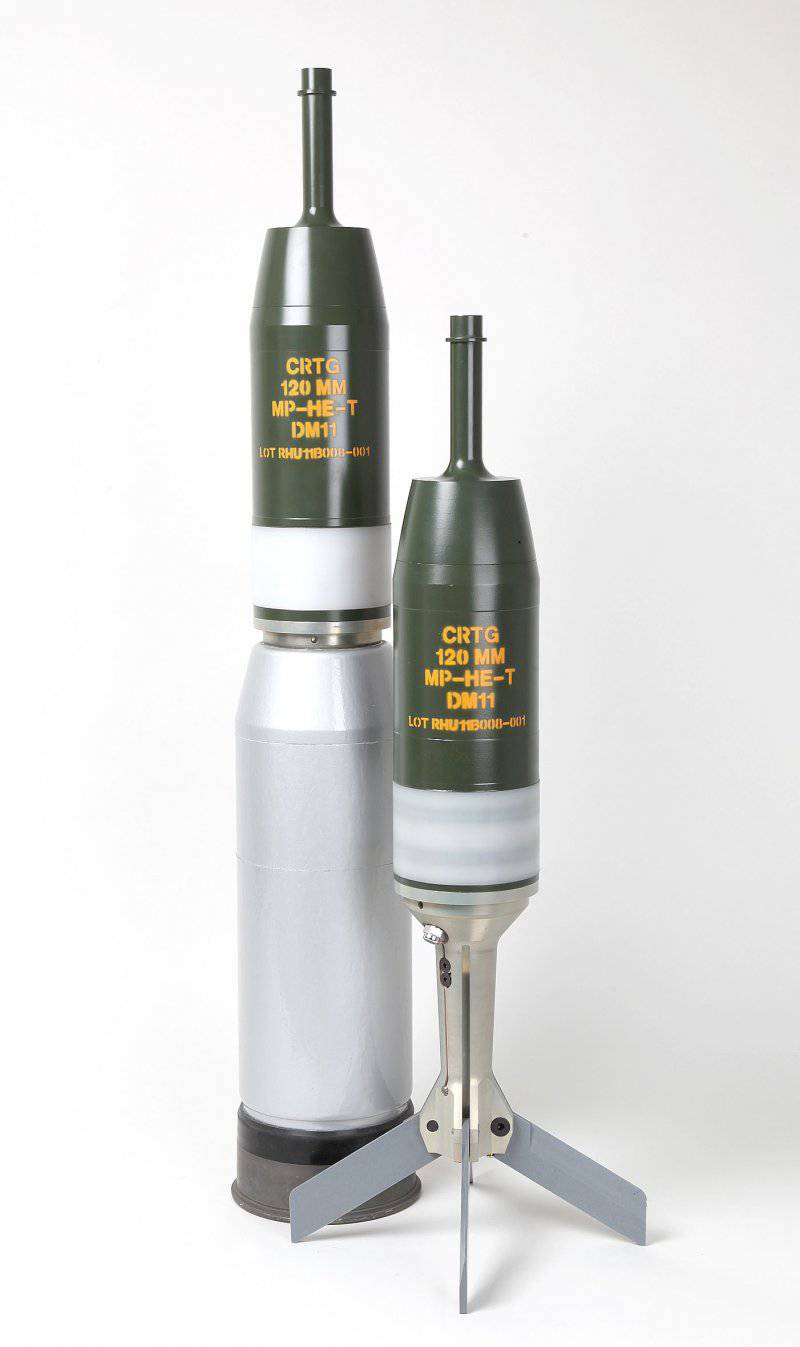
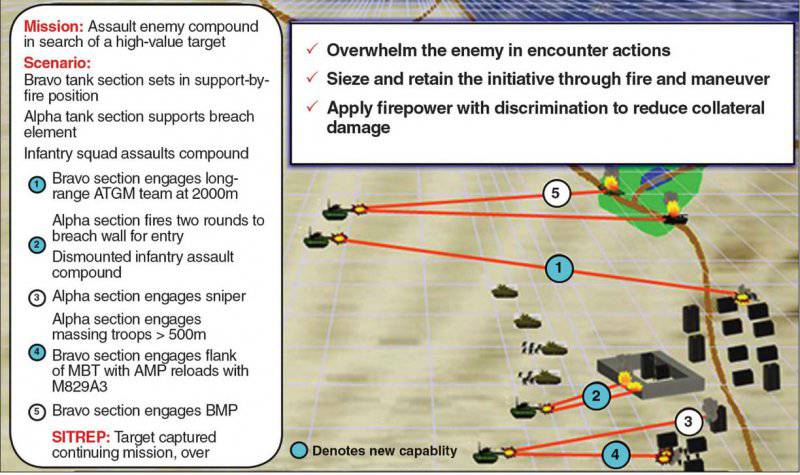
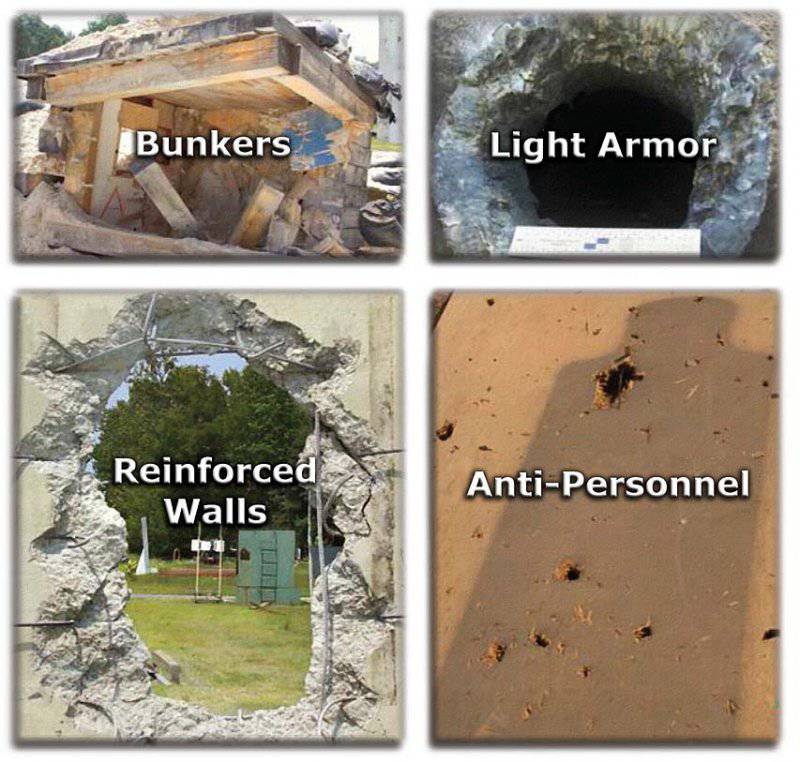
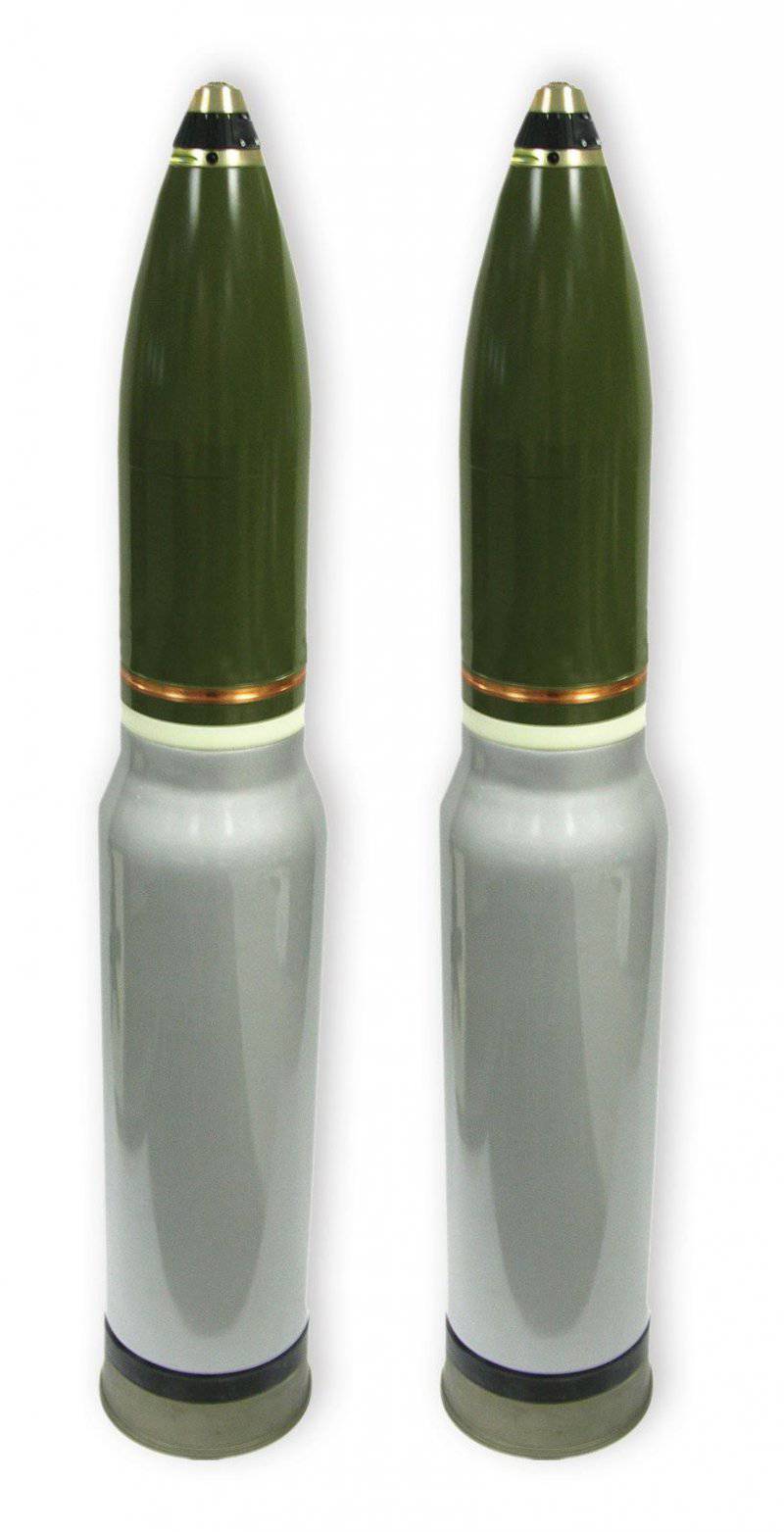
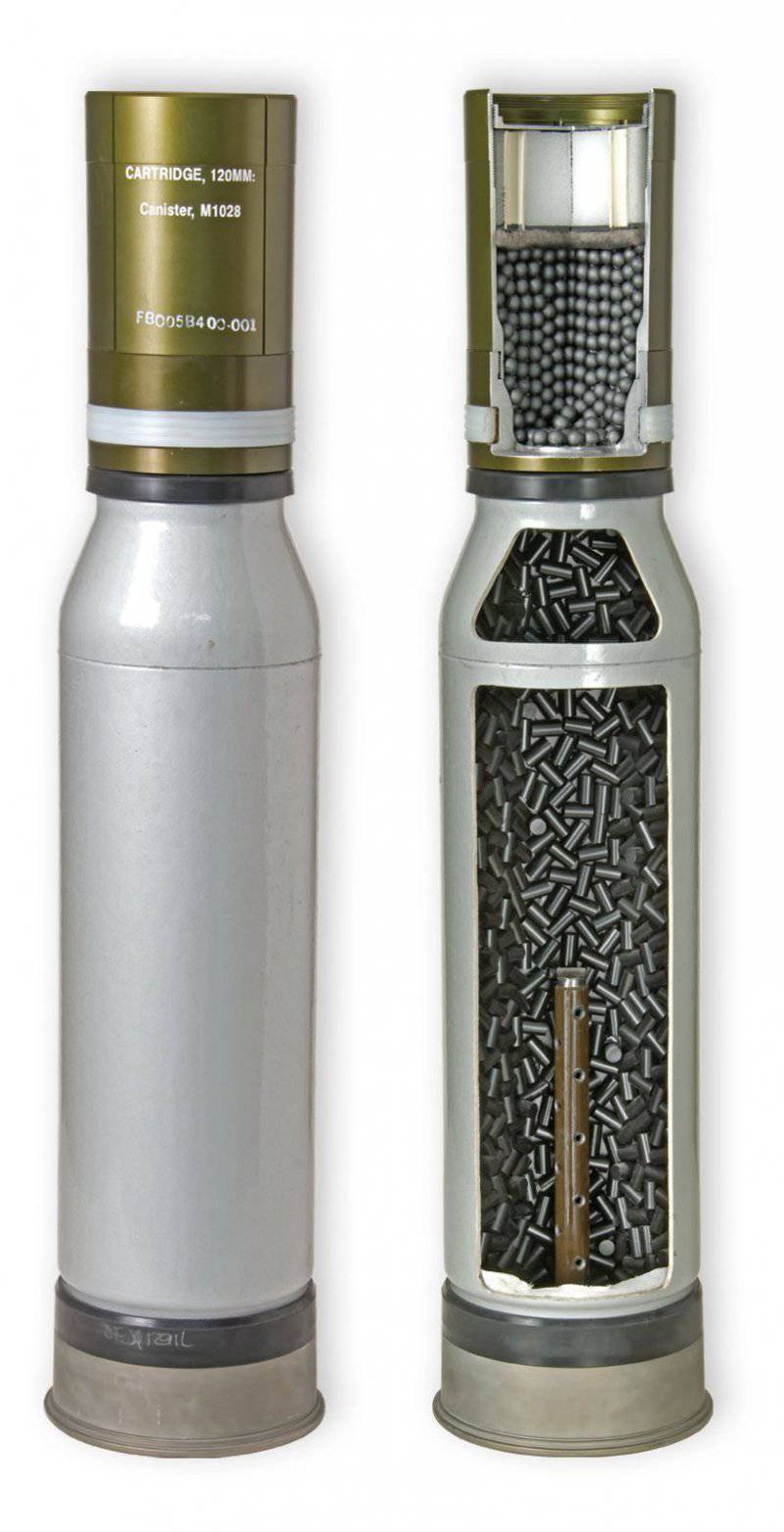
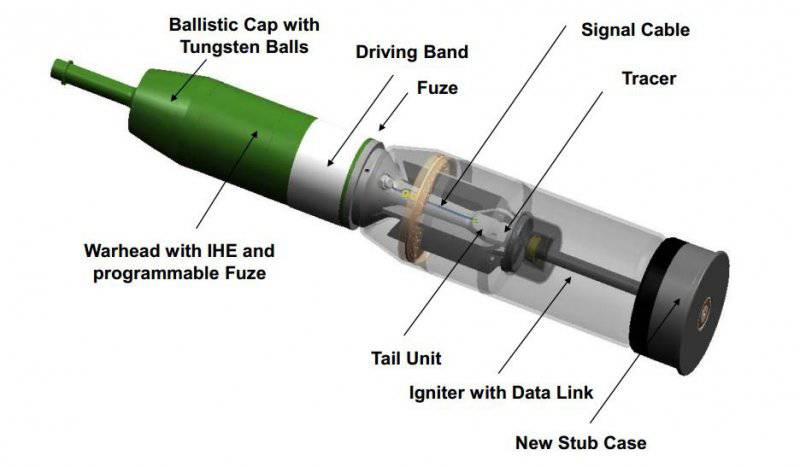
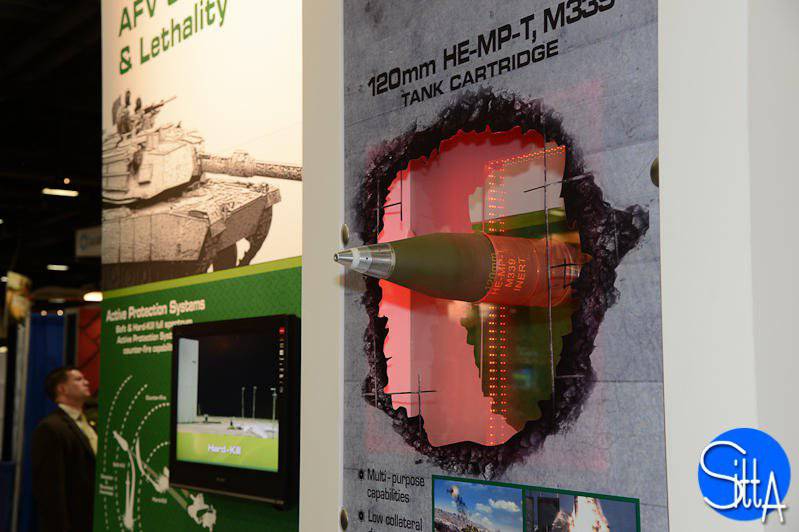

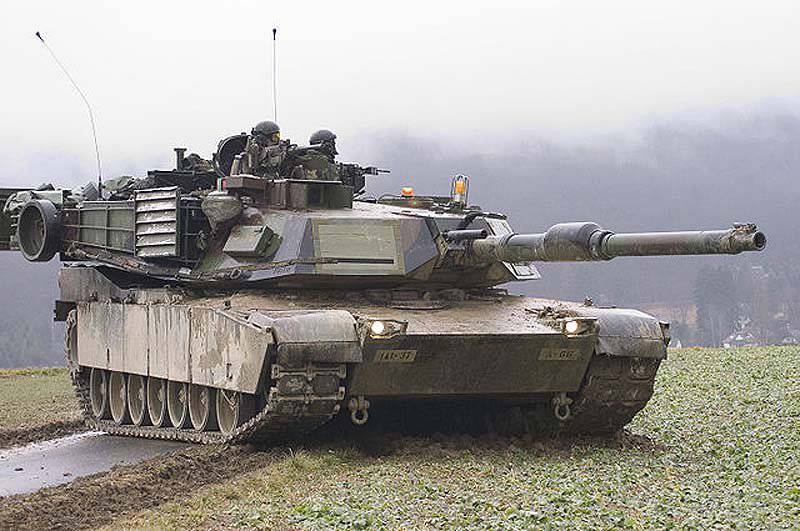

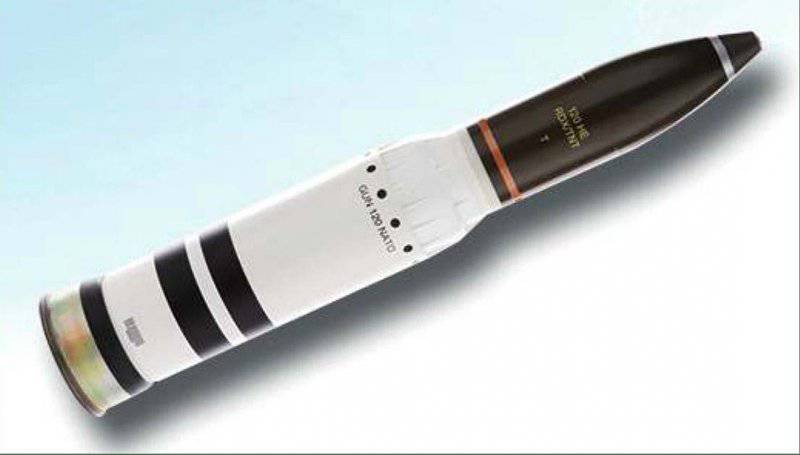

Information